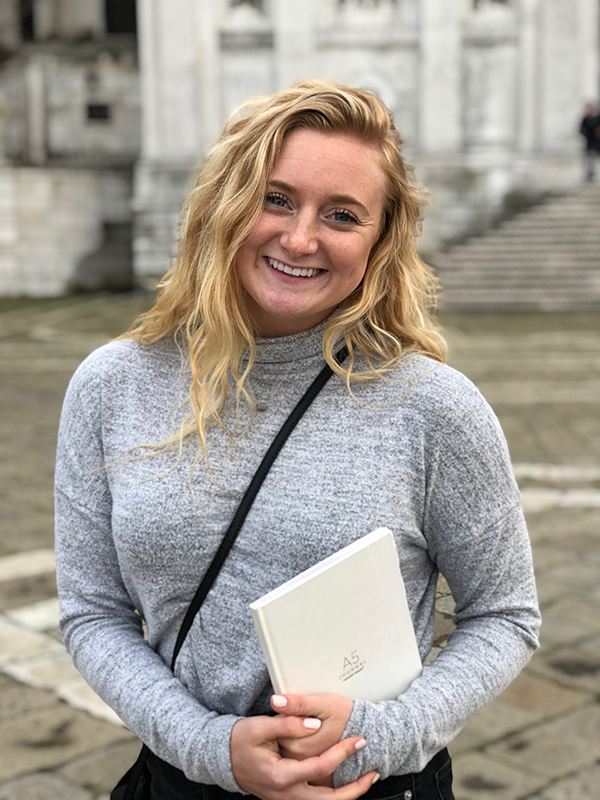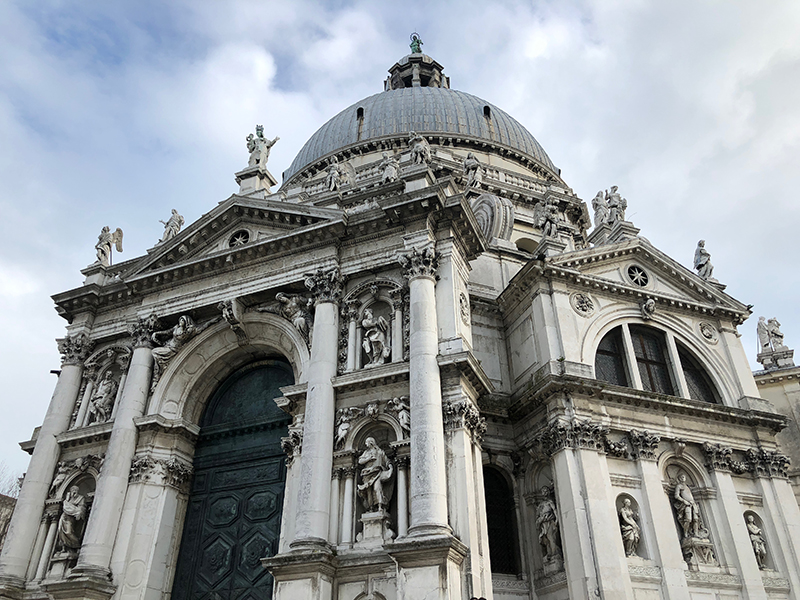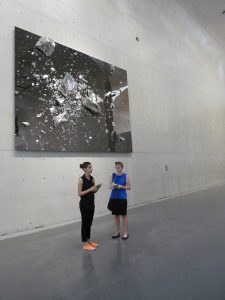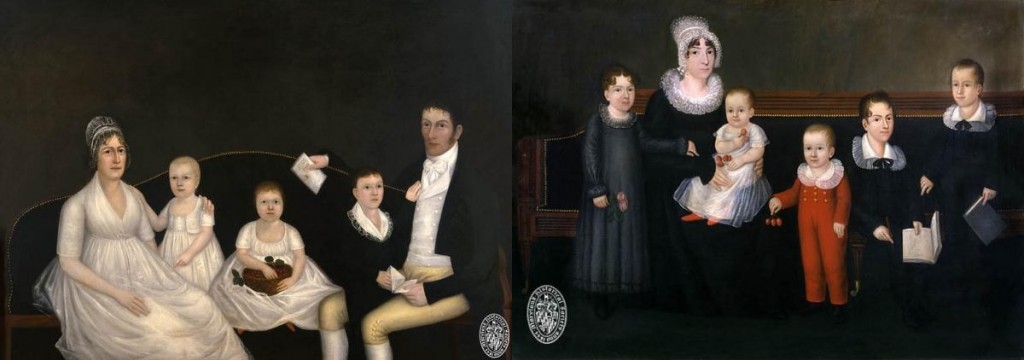Amanda Lesnikowski is a graduate student in Master of Arts in Art History program. Amanda received a Department of Art History Travel Grant to complete research for her Qualifying Paper, which she will present in May 2018.

The National September 11th Memorial and Museum in New York
Thanks to the University of St. Thomas’ art history department student travel grant, I was able to spend part of January at the National September 11th Memorial and Museum in New York. I am planning to graduate with my M.A. in art history this coming May. My qualifying paper will focus on the role of memory politics in two memorial museums: The National September 11th Memorial and Museum and the Museum of the Second World War in Gdańsk, Poland. By looking at different aspects of the National September 11th Memorial and Museum, I will be able to better understand how its spaces have incorporated the many emotions and opinions that surround the 2001 terrorist attacks. In the end, I hope to discover how memorial museums that began as single monologues have become inclusive spaces with community-based dialogues. When a museum, such as the Museum of the Second World War, has a historical agenda, it is left to exhibit history with a particular point of view—one that the museum has chosen as being representative of whatever history it has put on display. The power this decision-making gives to a museum can sometimes lead to it having a conflicting relationship with its government. State voices wish to recall memories that will serve a national interest, but those memories do not always align with what the museum has chosen to display.
I applied for the grant with the intention of spending one day outside at Michael Arad’s memorial pools, Reflecting Absence, and a second day inside at the museum, designed by SNØHETTA and David Brody Bond. I wanted to use this travel opportunity as a chance to walk through the spaces firsthand, read wall labels, listen to tour guides, and observe visitors. While travel websites like Yelp! and TripAdvisor are useful, nothing compares to an in-person experience. When I went online to purchase my tickets, I was disappointed to see that they were not touring the outdoor memorial. I knew that the memorial was open to the public starting at 7:30 a.m., so I thought I would get my bearings outside using their mobile app before going into the museum. After exploring a bit on my own, I took my mobile ticket to the K-9 unit at the museum’s entrance before walking through a security set-up that reminded me a lot of an airport.

An example of merchandise available for purchase in the gift shop.
I have read a lot about the commodification of tragedies so I made a beeline to the gift shop. I was dying to know if there were really coffee mugs commemorating the September 11th terrorist attacks. I walked around the store snapping photos of all of the things that made me shake my head. All of the walking and snapping did not fill the time until my 11:30 a.m. tour, so I went to the tour desk to see if I could sneak on the next tour and the reissued me a new ticket.
The memorial museum is built underneath where the World Trade Center’s north and south towers once stood. You begin the experience on the ground level where security is, and the first sub-level is where you find the gift shop, membership desk, and tour desk. According to our tour guide, the memorial museum has a dual mission: to memorialize those who were killed and to educate on the events of the day and days that followed. He also told us that the tour would have four themes: violence, heroism, solidarity, and remembrance.

These panels are where we began our tour.
Our group began to walk down a shallow ramp where a large map of the United States showed where the planes originated and where they ended. Large, vertical panels showed an outline of the United States and played images of people reacting to the towers. Overhead audio played of people sharing where they were when it all happened. Our tour guide met us at the end of this area and told us that our group was about to explore Foundation Hall followed by Memorial Hall. The tour would not include the in memoriam or historical exhibitions. I was really surprised by this! None of my previous research acknowledged that the tour was only of large artifacts and the foundation walls.

Overlooking Foundation Hall, you can see only a fraction of the exhibition space.
The tour began overlooking Foundation Hall where the iconic last column was standing. We continued down a ramp which led us to the survivors’ stairs. This important set of stairs is what saved so many people that Tuesday morning. We broke from talking about Foundation Hall to learn about Memorial Hall. This is where the unidentified remains are housed. Behind a large blue wall is the office of the city’s medical examiner. Within that private space is also a reflection room for families of victims. Next, we turned our focus back to Foundation Hall. Our tour guide took us to a twenty foot antenna fragment, an elevator motor, Ladder Co. 3’s fire truck, and a piece of steel from the north tower that had an outline from the plane’s impact. Our tour guide left us at the end of our hour at the base of the last column. I asked why the tour did not include the in memoriam or historical exhibitions and our guide said that given the content the decision to explore these two exhibitions needed to be a personal one.

The survivors’ stairs were the first artifacts to come to the museum.
Underneath the north tower is both a temporary exhibition space and the historical exhibition. These areas, along with the in memoriam, did not allow for photography. The historical exhibition is divided into three sections: the day of, pre-September 11th, and the days that followed. These three areas were very emotional, so much so that I actually appreciated the ban on photography. The south tower sat atop the in memoriam exhibition. A large square room was full of photographs of the deceased. Wrapping around the room in alphabetical order, the photos where accompanied by a recording of the reading of their names. In the center of the space was a small room with benches where you could sit to listen and read the stories being played out loud. It took me an hour to move through, but I do not regret the time I spent inside.

This blue wall is an iconic representation of the memorial museum.
This experience was incredibly important to my qualifying paper research. I want to thank the University of St. Thomas’ art history department for their generosity and support!

The last column is another popular image from both Ground Zero and the memorial museum.
























































